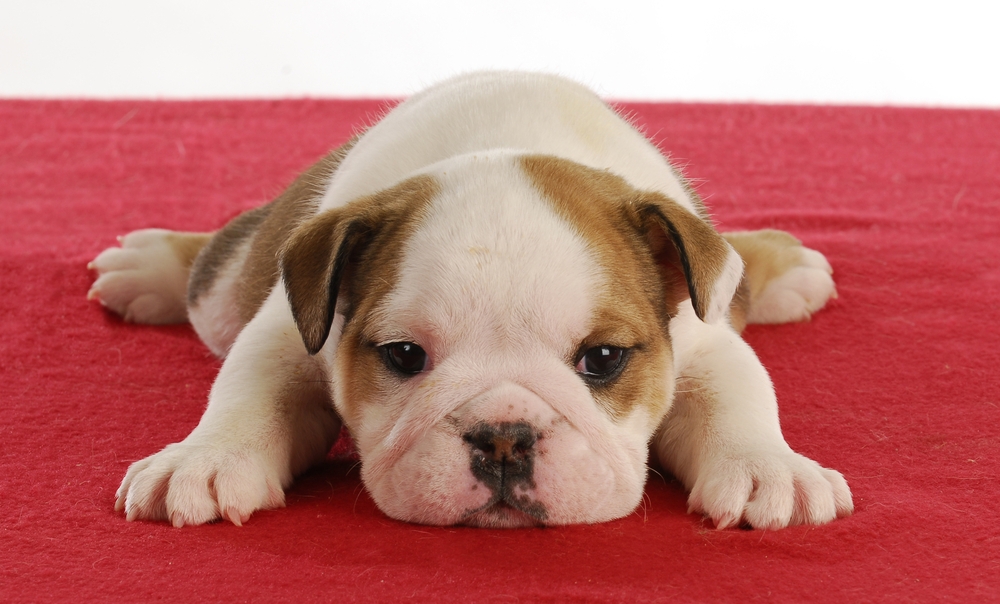Send your question to Umbra!
Q. Dear Umbra,
I just adopted a small dog with special needs. Because of her health problems, she cannot be walked regularly and thus has come to rely on wee-wee pads to relieve herself at home. But throwing them out and replacing them every day (even the ones made of recycled materials) seems wasteful and breaks my heart every time. Can you suggest a more sustainable solution?
Sammy
New York, N.Y.

Cheer up, pup! There are ways to respect nature when nature calls. (Photo by Shutterstock.)
A. Dearest Sammy,
Until your question arrived, I had not given much thought to the “wee-wee pad” issue. My personal experience with the world of wee-wee pads is (thankfully) limited, so I hope your fellow dog owners will chime in here.
The way I see it, this problem is akin to the diaper debate: Should you use disposables, which add heaps of non-biodegradable, plasticky waste to our landfills, or reusables, which require heaps of water and energy to clean? In fact, with 4 million babies born each year in America and about the same number of puppies, we have ourselves a startling parallel. Factor in dogs with special needs and others left indoors to do their business for various reasons, and we might be looking at a full-on wee-wee crisis.
In the past, I’ve assured parents of humans that the disposable vs. reusable choice doesn’t ultimately matter — each has its pros and cons. Too often, what the diaper debate really does is distract us from thinking about bigger issues like overpopulation and food production. That goes double for Fido.
In this case, however, I think reusable dog pads have a leg up. For one thing, there’s more trash at stake: One estimate suggests a dog goes through 17,000 disposable training pads in a lifetime, versus a baby’s 8,000 to 10,000 diapers. Reusable pads can also be used longer (and therefore washed less frequently) than cloth diapers, depending on your tolerance for odor. (I’m talking about urine, of course; I’m assuming one would pluck the poops as soon as possible.)
I understand there’s a pretty healthy market for used puppy pads, which would reduce the financial and environmental impact of this choice further. Considering that the average dog owner spends an estimated $400 a year on disposable pads, investing in a few reusables for $5 to $10 a pop seems like a good deal. I’ve seen others recommend the even cheaper route of buying reusable pads intended for humans — crib pads or incontinence pads — and cutting them up to make several for your pet. Of course, you could go to the other extreme and have some custom-made to match your décor. It all depends on you.
But I have other exciting ideas for you to think about. Take a look at a system like UGODOG, which is basically a grate over a shallow pan. The pan can be emptied into the toilet, or you can line it with newspaper or the company’s biodegradable pads. (As always, we recall that a “biodegradable” product only breaks down in the right circumstances, which is generally not a dark, cramped landfill.) Trouble is, it’s made of plastic. But when I think about all those wee-wee pads headed for the landfill, I’m almost ready to make an exception. Instead, I’m hoping you’re a DIY type, and you could create your own with … a commercial cookie sheet and metal grate? You could experiment! I’m getting excited on your behalf!
Another innovative catchment option, seen in models like the PetaPotty, features sod or artificial grass on top. This seems gentler for little paws and would possibly look nicer in your apartment — or at least be a good conversation-starter. But it’s quite a bit more expensive upfront, and I hear tell grass potties can get stinky over time. And here, too, we face the plastic dilemma.
Oh now I am truly curious, dog owners, whether any of you have tried these fancy options. But Sammy, for now I think reusable pads are the way to go. If you do stick with disposables, keep buying the ones made from recycled materials — at the very least, your heart can break just a tiny bit less knowing you’re not letting virgin materials go to waste.
Poochily,
Umbra




